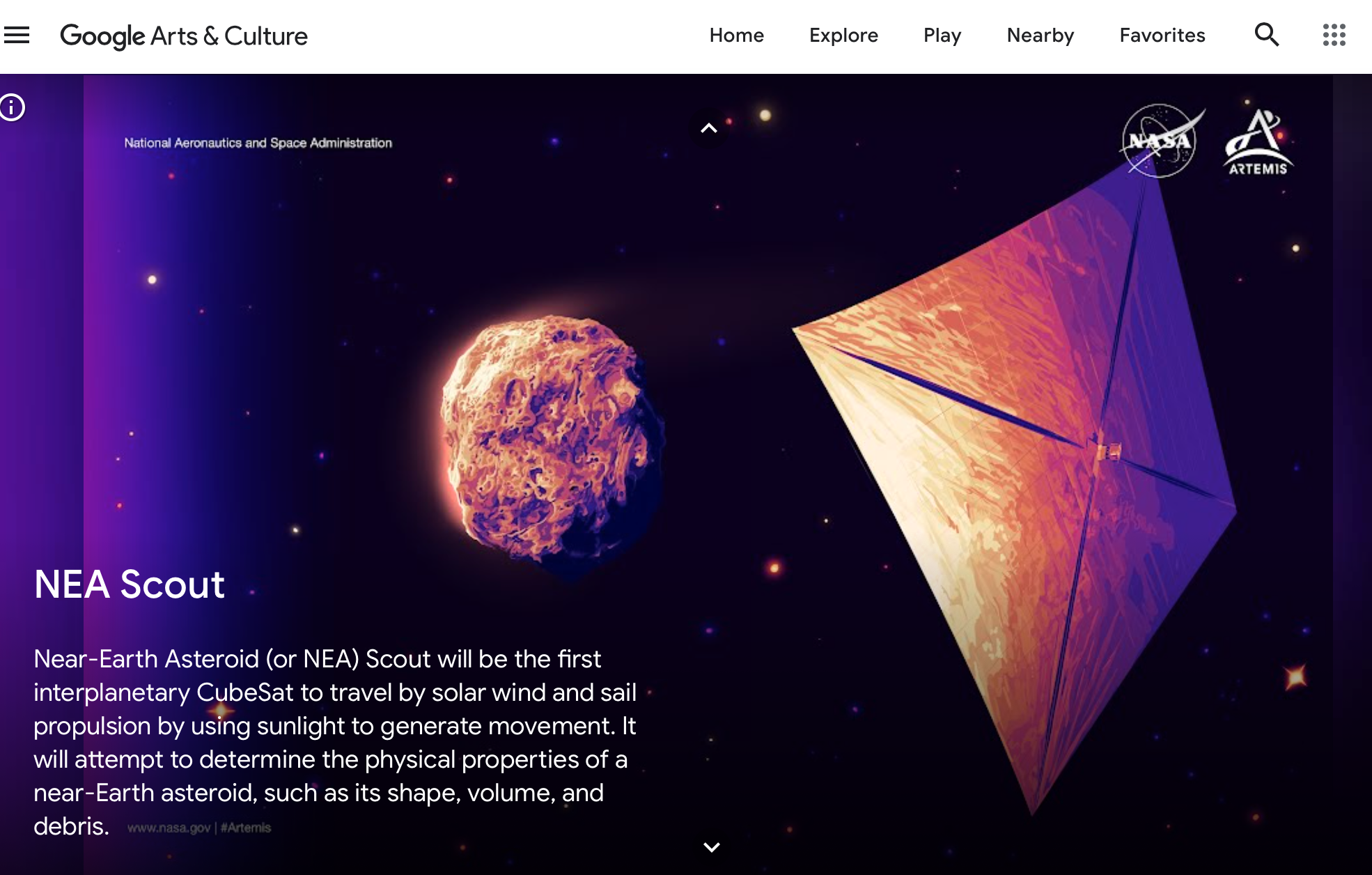Near-Earth Asteroid (or NEA) Scout will be the first interplanetary CubeSat to travel by solar wind and sail propulsion by using sunlight to generate movement. It will attempt to determine the physical properties of a near-Earth asteroid, such as its shape, volume, and debris. Image credit: NASA/Wes Buchanan
Google Arts & Culture Story:
10 Things You Didn't Know are Flying on Artemis I
I supervised this fantastic highlight of science on the Artemis I mission from pitch to publication. I oversaw content collection and copywriting, reviewed the content for technical accuracy and narrative flow, and provided creative direction to the artist who created the stunning custom illustrations of each CubeSat. I worked with the Artemis social media team and the Google Arts & Culture team to refine the content and worked within Google’s dashboard to construct the final product. I’m sharing a few of my favorite illustrations below, but I strongly encourage you to read the full story and learn about these small but mighty missions.
Highlighted skills: creative direction; storyboarding; pitching; script supervision
BioSentinel will be the first long-duration biology experiment to take place beyond Earth orbit and contains a microfluidics card, which leverages the physical properties of liquids and gases at a microbic scale, to study the impact of interplanetary space radiation on yeast. Image credit: NASA/Wes Buchanan
The CubeSat to study Solar Particles (CuSP) will be one of the first CubeSats to travel in interplanetary space, the region around the Sun and planets of our solar system. This satellite is dedicated to studying the dynamic particles and magnetic fields that stream from the Sun. Image credit: NASA/Wes Buchanan
LunaH-Map, short for Lunar Polar Hydrogen Mapper, is a tiny spacecraft that will embark on a 60-day mission that includes 141 orbits around the Moon. The spacecraft will produce a detailed map of portions of the lunar surface by using neutron spectroscopy technology. Image credit: NASA/Wes Buchanan
Please note: All samples on this page are shown to illustrate projects I have supported as a NASA contractor and member of the NASA HQ Artemis communications team. As with all NASA products, all work is collaborative and credit belongs to the excellent communications teams across the agency. All images are from NASA public assets.




